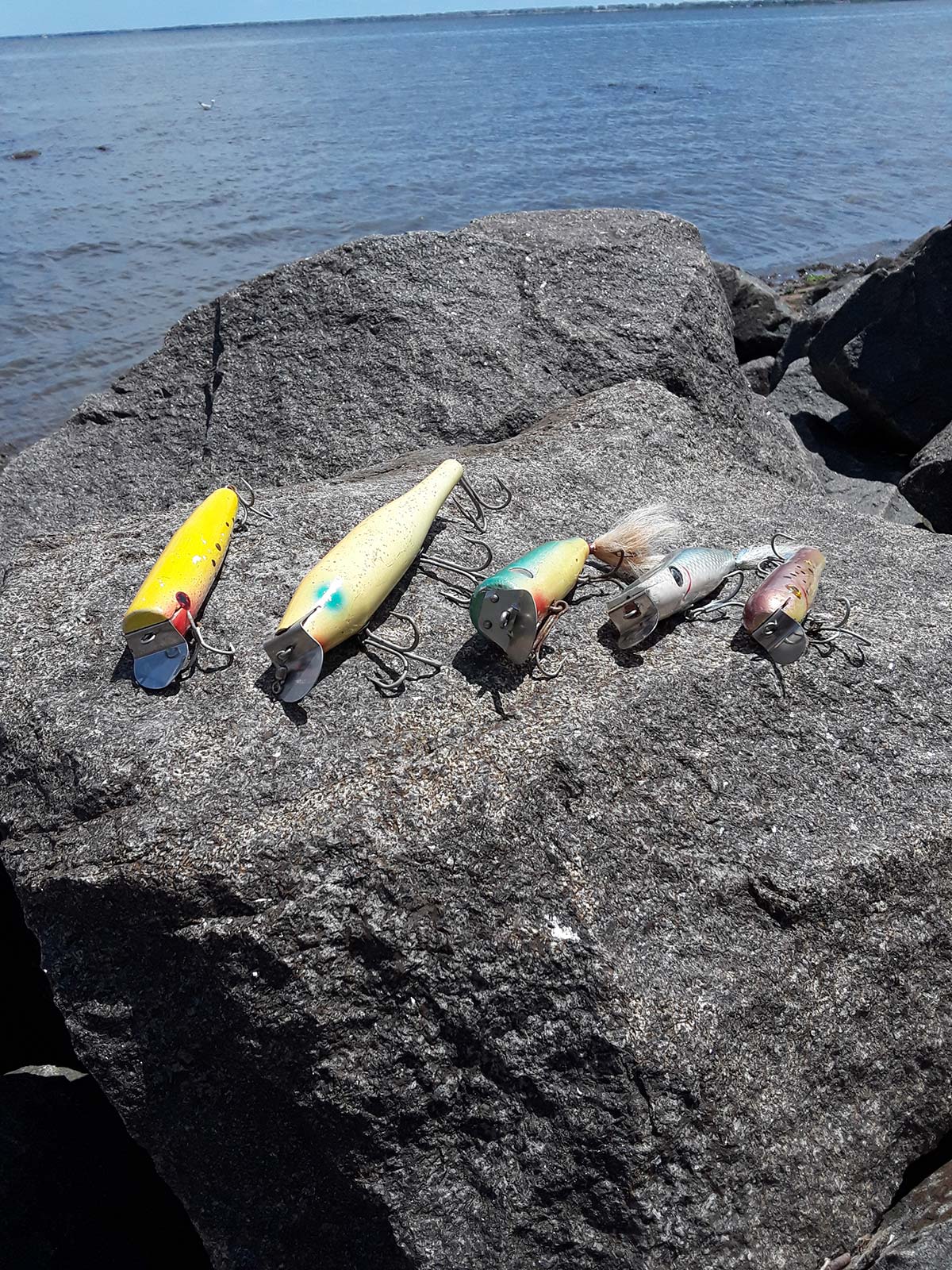
Discover the versatility and amazing effectiveness of the metal lip swimmer!
Surfcasters have a long list of lures available to them; one style of plug that’s high on my personal list of favorites is the metal lip swimmer. These wooden swimming plugs evoke vicious strikes that will leave your pulse rate peaking and your knees shaking! It seems to be something about the slow – lazy – swimming action of a metal lip that draws stripers in to demolish them. There’s nothing else out there that fishes quite like a metal lip.
I’ve been using these wooden baitfish imitations for many years casting along the rocky shorelines of Montauk. The one that started it all for me was the famous Gibbs Danny Swimmer. This plug is a surface swimmer that will typically swim right on, or just below, the surface leaving a wide v-wake. I picked that first Danny up at Johnny’s Tackle in Montauk and had some epic action from rocky north side of the point. Fishing them couldn’t be much simpler; cast out and reel just fast enough to get the plug swimming slowly along the surface, the fish will take care of the rest. I now use them all over the place; from the backs of inlets, to the back bays to the sand beaches, Danny Plugs crush striped bass.
Today’s surfcasters have a wide array to choose from. Most reputable plug builders make at least some kind of metal lip swimmer that range in size from 4 to 10 inches or more. We also have a lot more choices as far as running depth is concerned; from the surface down to more than 20 feet, there are metal lips that can achieve it. This gives us great options for the boulder fields to the inlets – and nearly every scenario in between. Sizes run the gamut from replicating peanut bunker to hickory shad.
The deep-runners are deadly in inlets and off of deep ledges or points. The goal with these plugs is to present your offering down near the bottom, often ticking the bottom as you swim it along. Some very large stripers are caught from the tips of jetties by drifting a deep-runner out into an inlet current and slowly swimming it back. Sometimes just allowing the plug to hang deep in the current with no action at all will evoke strikes.
For open beaches or shallow rocky stretches I like to use shallow runners like an Atom Junior (known to the old-timers as the Atom 54) or surface swimmers such as the aforementioned Danny or an Atom 40. Calm surf makes it easier to fish these plugs, but they can be used in rough water too by timing your casts between the big waves. They are especially deadly when worked through the white water near the shore.
Another thing many surfcasters love about metal lip swimmers is that they can be tuned. As a general rule, I don’t mess with the lip itself, it can be very hard to bend the lip back to where it’s ‘supposed to be’ after you mess with it. But you can very easily tune them for depth by bending the line tie up to dive deeper or down to ride higher in the water column.
Metal lip swimmers will produce both day and night and under a variety of conditions. One of my favorite places to work them is the back sides of inlets when the mullet and snappers are schooling up to move out in late summer and early fall. Also working them parallel along inlet rocks at night can really pay off, because the bass are nudging their way in to pick off cunners (bergals) and blackfish which are ever-present in these places. And I’ve had many nights when the metal lip swimmer was the only thing the fish would eat! If you haven’t discovered the secrets of the metal lip, I encourage you to start using them more often and you just might become a believer like me!




